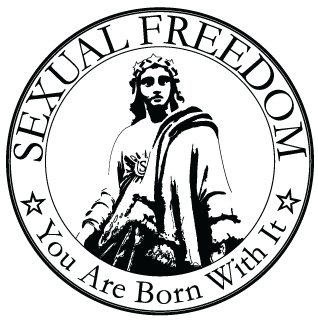Sex Education
-
Hairy Politics
•
5 min read
Happy No Shave November, everyone! (not sure who came up with this…) Since when is body hair gendered? Doesn’t it just seem logical that people are hairy? Warmth for winter, right? Apparently if you live in mainstream America, the answer is no. From a young age, girls are expected to shave their body hair –…
-
A Second Chance
•
3 min read
No one encouraged me to be productive, to make something of my life. Hell, I thought selling drugs and prostituting were careers so naturally when I grew up I followed in those footsteps. I became a prostitute which led to drug addiction and then the cycle began. Nothing good became of my life, each day…
-
“Informed teens are much more likely to wait for first intercourse, use condoms and other barrier and birth control methods at first intercourse, and are more likely to take responsibility regarding their own sexual health.” Emily E. Prior But not just any information given to teens will produce such a result. For decades, sex education programming…
-
Trans Women Need Love, Too . . . Don’t They?
•
3 min read
(También en español) WE ARE NOT SEXUAL OBJECTS! WE ARE NOT YOUR FANTASY COME TRUE FOR ONE NIGHT WITH NO EMOTION…. Don’t we have hearts? Aren’t we human? Don’t we deserve love? As a transgender woman I know how this feels. I was born in the wrong body, Dammit! It’s not my fault. The best…
-
Leland Bobbé is a New York photographer who has found himself at the center of attention in the Lesbian, Gay, Transgender, and Bisexual (LGBT) community. His amazing Half Drag photos are split down the middle with one side showing a man without makeup and sometimes even with a beard. The other side shows the same man in full drag…
-
(También en español) “The ‘raging frenzy’ of the sex drive, to use Plato’s phrase, has always defied control. However, that’s not to say that the Sumerians, Victorians, and every civilization in between and beyond have not tried, wielding their most formidable weapon: the law.” From Sex and Punishment: Four Thousand Years of Judging Desire by Eric…
-
(También en español) In Part 1, I highlighted the first three of six sex narratives developed by Marty Klein, Ph.D., in his book, America’s War on Sex, and outlined in last year’s State of Sexual Freedom Report, produced by the Woodhull Sexual Freedom Alliance (Woodhull). Dr. Klein posits, “Sexual freedom expands or contracts within political, social, economic, cultural, and psychological…
-
(También en español) “Sexual freedom expands or contracts within political, social, economic, cultural, and psychological contexts–some of them contradictory, some of them mutually reinforcing.” Marty Klein, Ph.D. This is where the narratives of sexuality come into play: a “narrative” is a coherent storyline that contains a set of assumptions that enables people to make meaning out…
-
Kink Forwarding Sexual Freedom Rights
•
4 min read
(También en español) Gay and straight Leather culture and BDSM culture combine under the mantle of Kink. Together these sexual freedom warriors are taking a machete to the underbrush of the sexual rights movement, blazing a trail that puts in play every question of civil rights and human rights in modern society, including the freedom…
-
Sexual Outlaws or Intentional Families?
•
4 min read
(También en español) We are really looking forward to hearing from Family Law Attorney Diana Adams this weekend at the Woodhull Sexual Freedom Alliance’s Sexual Freedom Summit (Silver Spring, MD, September 21-23). Her workshop, “21st Century Families: Cultural and Legal Shifts toward Family Freedoms,” will chart the decline of heterosexual monogamous nuclear families, once in the majority, to today’s…
